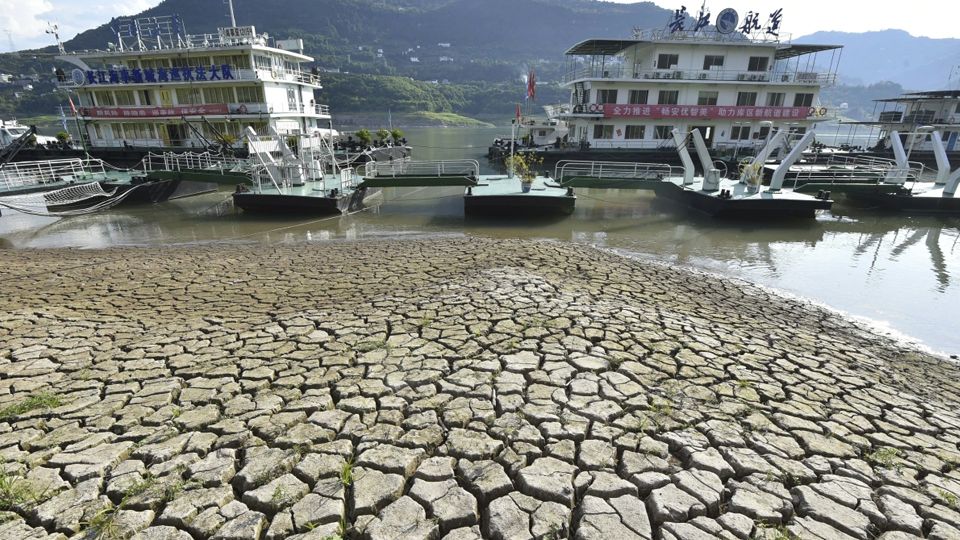China faces a serious water catastrophe that will cause global shortages of food, industrial materials and consumer goods

Multi-year drought conditions in China will soon bring the country to the brink of collapse which will trigger a global famine, scientists have warned.
Food, industrial materials, and consumer goods will be severely limited as a result of China's grain and electricity shortages.
As one of the world's major producers of food, energy, and other essential goods and materials, the disruption in China will have an impact on all of us.
Naturalnews.com reports: “Unlike other commodities, water does not have any viable substitutes,” reports Foreign Affairs. “It is essential for growing food, generating energy, and sustaining humanity.”
“For China, water has also been crucial to the country’s rapid development: currently, China consumes ten billion barrels of water per day – about 700 times its daily oil consumption. Four decades of explosive economic growth, combined with food security policies that aim at national self-sufficiency, have pushed northern China’s water system beyond a sustainable level, and they threaten to do the same in parts of southern China as well.”
Water supplies in Beijing, Shanghai, Tianjin and North China Plain 50% or more below UN’s definition of acute water scarcity
Fresh water has been a problem in many parts of Asia for some time now. In Hong Kong, for instance, seawater has been used to flush toilets for several decades now.
In China as of the year 2020, water availability in the North China Plain has been at least 50 percent below what the United Nations considers to be a situation of acute water scarcity. The situation is the same or worse in the cities of Beijing, Shanghai and Tianjin.
The North China Plain’s 253 cubic meters per capita of available water is less than half of Egypt’s 570 cubic meters per capita in 2019, a year of severe water stress for the North African country. Keep in mind that Egypt does not have to maintain a large manufacturing base like China does.
Another problem with China’s water situation is that much of what it does have is undrinkable. A 2018 analysis from China’s Ministry of Ecology and Environment found that, despite minor improvements, nearly 20 percent of China’s surface water is too contaminated to be consumed by humans.
Roughly seven percent of China’s available water is unfit for any use, scientists say.
“The quality of groundwater – which is critical for ensuring water supplies during drought – was worse, with approximately 30 percent being deemed unfit for human consumption and 16 percent deemed unfit for any use,” reports further explain.
China has a water resource overuse problem
A big part of that contamination comes from China’s heavy industries, which pollute dangerous chemicals straight into the ground or into existing water supplies.
There is also the chemical runoff from industrial agriculture, which, like in the United States, leaves the ground and environment polluted for many years as it seeps into groundwater supplies.
“Data from the UN Food and Agriculture Organization indicate that China uses nearly two and a half times as much fertilizer and four times as much pesticide as the United States does despite having 25 percent less arable land,” Foreign Affairs explains.
The Chinese Communist Party (CCP) is notorious for trying to cover up these inconvenient facts as they make the country look bad. But the truth is out there for inquiring minds, and it tells the story of what the future holds for China and the rest of the world that relies on the country as a manufacturing and trade partner.
The North China Plain has also been getting overused for many years, leaving it at risk of drying up completely. The most populated areas in Northern China, including areas along the Yangtze River ranging from eastern Sichuan to southern Jilin – home to more than one billion people – are also suffering as water supplies dry up.
For the past 15 years, in fact, much of that region has seen steady declines in not just groundwater but also lake and river water.
“In parts of North China, groundwater levels have declined by a meter per year, causing naturally occurring underground water storage aquifers to collapse, which has triggered land subsidence and compromised the aquifers’ potential for future recharge,” Foreign Affairs warns.
“Recognizing the urgency of the problem, China’s government in 2003 launched the $60 billion South-to-North Water Transfer Project, which draws water from tributaries of the Yangtze River to replenish the dry north. To boost rainfall (and sometimes engineer better weather, for example, for Olympics ceremonies and party anniversary events), China has also deployed aircraft and rockets to lace clouds with silver iodide or liquid nitrogen, a process known as cloud seeding.”
Thanks for visiting Our Secret House. Create your free account by signing up or log in to continue reading.





